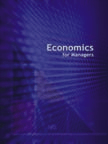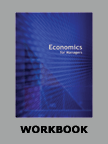Oticon A/S: Spaghetti Organization and Beyond




|
|
ICMR HOME | Case Studies Collection
Case Details:
Case Code : BSTR318
Case Length : 23 Pages
Period : 1988-2008
Pub Date : 2009
Teaching Note :Not Available
Organization : Oticon A/S
Industry : Hearing aid
Countries : USA
To download Oticon A/S: Spaghetti Organization and Beyond case study
(Case Code: BSTR318) click on the button below, and select the case from the list of available cases:

Price:
For delivery in electronic format: Rs. 400;
For delivery through courier (within India): Rs. 400 + Rs. 25 for Shipping & Handling Charges
» Business Strategy Case Studies
» Case Studies Collection
» Business Strategy Short Case Studies
» View Detailed Pricing Info
» How To Order This Case
» Business Case Studies
» Area Specific Case Studies
» Industry Wise Case Studies
» Company Wise Case Studies
Please note:
This case study was compiled from published sources, and is intended to be used as a basis for class discussion. It is not intended to illustrate either effective or ineffective handling of a management situation. Nor is it a primary information source.
|
|
<< Previous
Putting People First Contd...
According to Soren Nielsen (Nielsen), who was appointed as
the President (Portfolio: R&D, Marketing, and HR) at Oticon, as part of the new
executive board appointed in September 2008, the challenge was to spur further
growth in the face of the changing dynamics in the hearing aid market.
Around two decades ago, Oticon was faced with a far more drastic situation. One
of the world's foremost developers, manufacturers, and wholesalers of hearing
aids till the 1970s, its position in the hearing aid industry was severely
challenged in the late1980s.
|
|
Experts felt that the advent of technologically advanced In-the-Ear (ITE) hearing aids models along with market domination by corporations having large research and development (R&D) facilities and financial strength during this era, were the key factors behind the company's downfall.
|
|
Oticon failed to understand the consumer's demands at
this juncture, and this led to a crisis situation marked by a drastic
fall in its sales and a resultant loss of market share.
On August 8, 1991, the company began a process of overall
transformation, in an attempt to regain its position in the hearing aid
industry. This transformation had its roots in a memo issued by its new
Chief Executive Officer (CEO) Lars Kolind (Kolind), on January 1, 1990,
titled "Cogitate Incognita". Oticon's radical makeover was lauded in
business circles and by management experts. It was said to be a 'novel
innovation' in management concept, style, and process and organization
structure... |
Excerpts
>>

|
|



